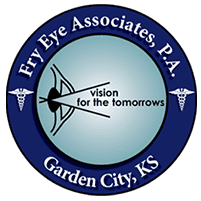Cataract Surgery
Cataract surgery can restore vision lost when the natural lens in your eye becomes cloudy and blurs your vision. This outpatient procedure involves mild sedation and minimal recovery time. In most cases, you’ll be able to resume your normal activities the day after surgery.
Learn More

Cataract Surgery FAQ
Cataracts are a normal part of aging but can also be caused by injury or illness. Some of the factors that can cause cataracts to develop more quickly than usual include:
- Diabetes
- Smoking
- Excessive alcohol consumption
- Spending too much time in the sun without sun protection
- Serious eye injuries
- Eye surgeries to treat other eye conditions
- Radiation therapy
- Certain drugs, like corticosteroids
Most people who are affected by cataracts experience them equally in both eyes, but they can develop unevenly, with the vision in one eye becoming worse than the other.
- Blurry, cloudy, or hazy vision
- Difficulty seeing at night
- Increased sensitivity to light and glare, particularly when driving at night
- Difficulty reading fine print
- Needing brighter light to read or see details of objects
- Double vision in one eye
- Halos around bright objects
- Faded or yellowing of colors in your vision
Cataract surgery removes the eye’s natural lens that has become clouded (a cataract) and replaces it with a new, clear, artificial lens implant called an intraocular lens (IOL). Once removed, your cataracts will not come back and the IOL implanted remains permanently in your eye.
Modern technology has made it possible for patients to comfortably have cataract surgery with mild sedation, and without going to the hospital. The cataract is removed and an IOL is placed through tiny incisions that usually do not require stitches to close and minimal recovery time.
We perform cataract surgery at our ambulatory surgery center, which has been designed especially for eye surgery. Patients can resume normal activities the day after surgery.
An intraocular lens or IOL is a clear, artificial lens that is implanted into the eye. This replaces the natural lens of your eye, usually after cataract removal. Imaging and measurements taken of your eyes during your clinic evaluation are used to estimate the best type and power of IOL to place in your eye. These measurements are not perfect and cannot guarantee that the selected IOL meets all of your post-operative vision goals. It is the best estimation using the most current evidence based clinical technique and best available technology.
Current technology has not yet produced an IOL that allows for patients to see all things sharply, at all distances at all times without any aid, like eyeglasses. Some amount of this natural limitation (presbyopia) should be expected with an IOL, even with the most advanced IOL options available.
Fry Eye Associates offers several types of intraocular lenses and your ophthalmologist will make recommendations based on the findings of your evaluation and discussion of visual needs. The types of IOL we offer include:
- Monofocal
- Toric
- Multifocal
A monofocal IOL provides clear vision at a specific distance set by your ophthalmologist. Patients are set to near, intermediate or distance vision. Your ophthalmologist will set your target visual distance goal based on exam findings and discussion of your lifestyle and visual needs. Only one of these three can be selected and will not change after surgery.
After cataract surgery, most patients find that reading glasses are helpful to sharpen their vision if they have monofocal IOL. This IOL is the most widely used and works well for most people. It has been available the longest and is most affordable, as it is covered by most health insurance plans.
Learn more about monofocal IOL:
En español
A toric IOL provides clear vision at a specific distance for those with astigmatism. It is similar to a monofocal IOL in that your ophthalmologist will set your vision to near, intermediate or distance depending on exam findings and your lifestyle and visual needs.
A normal eye is round like a basketball. With astigmatism, there is an abnormal curvature of your cornea or lens, causing it to be more football shaped. This results in blurry vision as light cannot focus well at near or distance.
A toric IOL will help correct your astigmatism. If you have astigmatism and do not choose an astigmatism-correcting option for cataract surgery, then glasses or contacts will likely be needed after surgery to have the clearest vision at any distance.
Learn more about Toric IOL:
En español
The extended depth of focus IOL (EDOF IOL) is the latest in intraocular lens technology. It enables patients who good candidates for the IOL to see at intermediate, far, and near distances. It can greatly decrease or eliminate the need for glasses. There is out-of-pocket expense with this IOL choice for patients as Medicare and most private insurers do not cover this type of lens.
Schedule Your Visit
Our doctors are here to help address your concerns about your eyes and are experts in finding solutions that work best for you.


